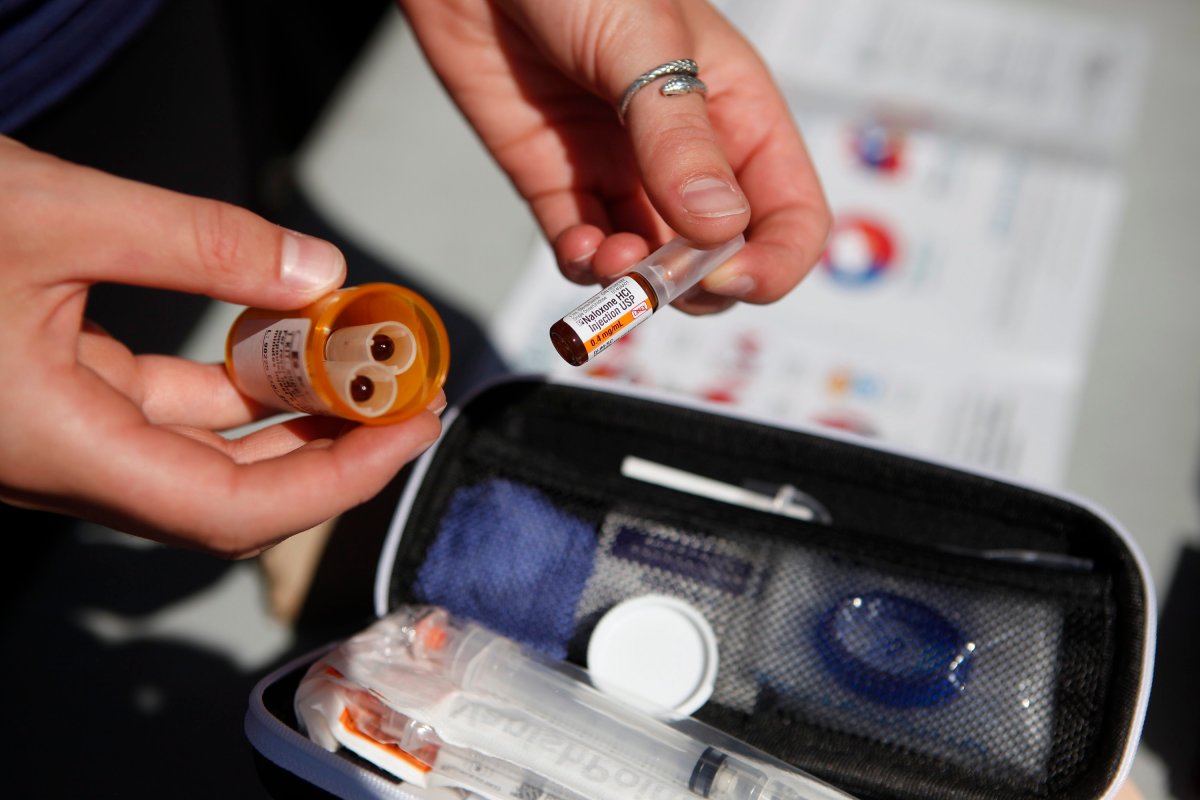A local partnership of more than 125 community agencies are sharing the results of their work to combat substance use and addiction in Hamilton.

The Hamilton Drug Strategy (HDS) — which includes Hamilton Public Health, emergency responders, hospitals, addictions services, and other stakeholders — has released its 2019 report, which outlines its approach to dealing with substance use through prevention, harm reduction, social justice & justice, and treatment.
It focused on five main substances: opioids, alcohol, cannabis, cocaine, and stimulants like methamphetamines.
There were 124 opioid-related deaths in the city in 2018 — up 41 per cent from the previous year and more than double the number in 2017.
According to the most recent data on the city’s website, Hamilton has consistently had a higher number of opioid-related deaths than the provincial average. It was 111 per cent above the provincial rate in 2018.
Dr. Elizabeth Richardson, the city’s medical officer of health and chair of the HDS, said it’s difficult to determine why Hamilton has more opioid-related deaths and overdoses than other municipalities in Ontario.
“That’s the big question, right, in terms of why is it continuing to get worse,” said Richardson. “Because we know that the issues behind it are complex. We’ve had contributions that are from people who have had chronic pain, and then using medication for that pain, and then ending up addicted.
- Naloxone-resistant street drug linked to 9 deaths in Eastern Canada seized in Alberta
- ‘She gets to be 10’: Ontario child’s heart donated to girl the same age
- Buzz kill? Gen Z less interested in coffee than older Canadians, survey shows
- Bird flu risk to humans an ‘enormous concern,’ WHO says. Here’s what to know
“We’ve had people that are using opioids as a way of coping, or other substances as a way of coping with the trauma that they’ve experienced in their lives. So there’s a number of reasons why it’s happened and happening.”
Karan Hobley is one of those who has overcome a battle with opioid addiction.
She began taking opioids after they were prescribed to her by a doctor following a car accident that left her with chronic pain and resulted in the amputation of her leg.
“I started to notice my tolerance was going up, my dependence,” said Hobley. “And then it slowly just kind of evolved into needing it every day. Like, the cravings in your brain. And I couldn’t understand it at that time.”
With her dependence on opioids mounting, Hobley said her life unravelled. It culminated in her reaching out to Womankind Addiction Service in July 2017 — a decision she describes as the best thing she’d ever done.
“I knew that I needed assistance and guidance and help to get through what I was going through. It was way too much for me to handle. The addiction to the opioids was quite extreme, and I had lost everything at that time. So I was very alone.”
Hobley’s experience with Womankind brought her back from a dark place, as she went through a detox program, rehabilitation, and treatment. She’s now in the aftercare program and is even beginning to train as a peer support adviser for other people in recovery.
Part of the HDS’ harm reduction strategy in 2019 included making Naloxone more readily available across the city.
The most recent numbers from the city show that 17,705 naloxone doses were distributed by public health and at various Naloxone expansion sites last year, leading to 2,214 overdoses being reversed. That’s a significant increase over 2018 figures, which show 6,412 doses administered and 568 people revived.
So far this year, Naloxone has been administered nearly 2000 times at public health and expansion sites, reversing 122 overdoses.
“We’ve got a number of community partners who are now on board and able to distribute it,” said Richardson. “We’re seeing the increasing number of people who are involved in treatment and providing treatment services. So we’re seeing that response to those issues, but we’ve got a ways to go. This is going to take some time to address.”
While opioids are the leading cause of deaths in terms of substance use in Hamilton, it’s not just illegal substances causing serious health problems.
According to the HDS report, 48 per cent of adults use alcohol above the safe use guidelines. There are 3,000 emergency room visits each year attributed to alcohol-related harms. In the past year, one in three high school students say they’ve engaged in binge drinking.
Richardson said the number of people dying from alcohol-related harms each year is usually around 100 and doesn’t tend to fluctuate, even as other deaths from substances are on the rise.
Speaking to Global News Radio 900 CHML’s Bill Kelly Show, Richardson said it’s about moderation, referring to Canada’s low risk drinking guidelines — which state that men shouldn’t have more than 15 standard drinks a week and 3 per day, while women shouldn’t exceed 10 drinks a week and two per day.
“People need to pay attention to those, look at those things, and think about their own drinking practices,” said Richardson.
One of the accomplishments mentioned in the HDS 2019 report was an anti-stigma campaign about addiction, launched on November 18 and running until December 21.
“See The Person” involved videos, social media posts, and posters over the four-week period, highlighting the challenges faced by those who struggle with addiction.
Lisa Colbert, a peer support worker with Indwell, is one of those featured in the video campaign. During Tuesday’s report presentation, Colbert shared her story about becoming an addict.
“Addiction does not discriminate,” said Colbert. “When I called my doctor to ask about a referral to treatment, I had just seen the receptionist weeks before with my daughter. And I called and asked for a referral.
“And she said, ‘For who?’ I said, ‘For me’.
“She started going through the questionnaire. When she got to the one about drug of choice, I told her crack-cocaine. There was silence for a moment. Then she started going through the rest of the questions, and she stopped. And she said, ‘I’m sorry, Lisa, I have to call you back’.”
“She called me back and she said, ‘I am so sorry. But you just floored me, and you proved to me that old age saying that you can’t judge a book by its cover’.”
That’s a message that Hobley echoed. She said she was a career woman with a home in her late 30s when addiction took over her life.
“It can happen to anybody, and I think it’s important that message is relayed,” said Hobley. “It can happen to anyone, in any situation.”
She added that the other important message she can communicate for people suffering from addiction is to reach out for help.
“There’s a lot of help out there if you can pick up that phone. It’s a hard thing to do, but it’s worth it. Because I couldn’t have done this alone. There’s no way.”




Comments